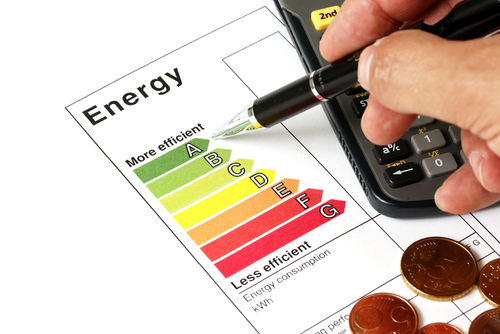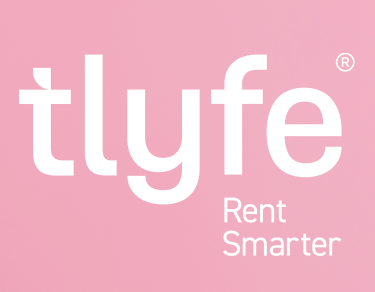
Households living in rental properties across the North of England face the biggest financial headache from soaring fuel price rises, according to a new study.
PropTech data firm Homesearch says its research has revealed which areas have the best and worst Energy Performance Certificate ratings and will be the hardest hit financially.
Tenants in Blackburn will face the highest fuel bills in the coming months, with 78 per cent of rental properties having a poor D-G EPC rating.
This compares to 74.8 per cent of homes in Llandudno, closely followed by Blackpool with 74 per cent.
Conversely, London boroughs dominated the Top 10 most eco-friendly rental areas to live.
Those tenants living in the London borough of Tower Hamlets will experience the lowest energy bills nationally, with 72 per cent of rental properties boasting an A-C rating. This is followed by Southwark and Islington - 63 and 58 per cent respectively.
Homesearch data found that 62 per cent of rental properties in the UK have an EPC rating of D-G meaning they will be hardest hit by rocketing fuel bills.
With average rental prices significantly higher in London than other areas of the UK, Homesearch data also examined which boroughs in the capital are home to the least energy efficient properties.
Renters in Waltham Forest will see the biggest surge in energy bills, with 68 per cent of properties having a D-G EPC rating, compared to Bexley in second and Redbridge in third with both boroughs on 66 per cent.
As Scotland has a slightly different EPC grading system to England and Wales, Homesearch examined rental areas north of the border in isolation and found that Dumfries has the least eco-efficient rental properties.
Sam Hunter, chief operating officer of Homesearch, says: “With rising inflation and the cost-of-living crisis set to worsen, over half of those renting in the UK will pay a premium for their energy usage simply due to the energy inefficiency of their home.
“Our data indicates a clear North-South divide in the environmental viability of rental accommodation and many households are going to struggle to pay energy bills through no fault of their own.
“Although it is a postcode lottery, we envisage that the EPC rating of a property is going to be a key decision factor for tenants when choosing a rental property, especially as energy consumption and prices spiral later this year.”















%20-%20IMAGE%20Client%20Accounting%20%E2%80%93%20what%20are%20your%20options.jpg)
%20(002).png)

.png)
.png)

%20(002).jpg)













Join the conversation
Jump to latest comment and add your reply
I have a 3-bed rental, built in 1959 and it's not Listed. It was an EPC Grade E and my tenant was complaining of high energy bills last winter. I give the following information to readers free of charge because it's worked very nicely for me
1. I got my domestic EPC assessor to prepare a new draft 'as is' EPC and a draft 'predicted' EPC for the house based on the refurb I was planning to do.
2. My handyman installed 100mm of loft insulation between the joists and then an extra 200mm layer of loft insulation at right angles across the joists. This is current Building Regs standard for a new house. Loft insulation is £24 for a big roll at B&Q
3. I had a Google Nest thermostat/timer installed. I ordered this direct from Google and a professional installer fitted it within the price.
4. My plumber installed TRVs on all the rads and showed the tenant how to use them.
5. My electrician fitted a 'kill switch' by the front door wired into the lighting circuits of the Distribution Board. As the tenant leaves the house one push of the button turns off all the lights in the house. Very simple and effective.
6. My handyman changed all non-LED lamps over to Philip LED lamps
7.I had already got my handyman to install solid insulation board between the joists on the ground floor prior to some recarpeting that I did a few years ago.
8. Pioneer Insulation fitted external wall insulation around the walls. This was a big investment but the house now looks brand new and it's a unit that I'm holding long-term.
9. I couldn't justify the expense of new windows so I bought 'poor man's' secondary glazing from a small British company called WindowSkin. I used their product before to cover a large sash window in the winter in a draughty office that I use to rent. It's a custom cut piece of totally clear Perspex that clips on the inside of the window frame in winter to cut out 100% of window draughts. Stores under a bed in the summer.
10. Whilst we were at it my handyman installed a Nuaire DriMaster Heat Positive Input Ventilation (PIV) unit up in the ventilated loft with a outlet in the 1st floor landing ceiling. The tenant was moaning about condensation and being unable to dry clothes/towels. This simple fit-and-forget unit has totally solved these problems.
11. My EPC assessor came back after I had completed these works and gave the house an EPC Grade B by one point (score 81)). This certificate stays on the national database for the next 10-years.
My mortgage broker expects to be able to get a better rate for me now that I have a 10-year valid EPC Grade B when I have to refinance next year.
The above project took me about 10 x phone-calls and 2 x site visits to sort out. It really wasn't that onerous and I was surprised how straightforward it was after I’d done the initial research
I'm now close to finishing a similar package of works on my own family home – this will raise it from an EPC Grade E to a Grade C and will start to really reduce my energy bills in the next few weeks..
Hi Martin. Interesting write up. What sort of overall costs are we looking at for your list of works completed. Mainly the wall insulation? Did you do this on all upper and lower outside walls?
Martin, who is paying the bill for running PIV unit, how does it ensure an air flow, is it relying on draughts ? I think your secondary DG should be classed as temporary. How much and what type of insulation is between the floorboards ?
Tenant pays for the small amount of electricity that the PIV unit uses. The ventilation fan runs silently 24/7/365 at a max of 15 watts. There is 400w heater built-in to the unit that only comes on automatically when air in the loft is very cold. This heater then tempers the incoming the fresh air. The tenant is fully aware of the small running costs and is delighted that the running condensation on the windows is a thing of the past, the family's clothes actually dry on an airer and their towels dry. Just check out the videos on the Nuaire website if you want to know how it works.
From memory my handyman installed 80mm of rigid foam board between the ground floor joists before we did the re-carpeting project.
Michaela, the whole external wall insulation project was circa £25,000. The house was not a looker prior to the works but with the new render it now looks brand-new and very smart. This house is a long-term hold in my portfolio.
Martin, thanks.
Please login to comment